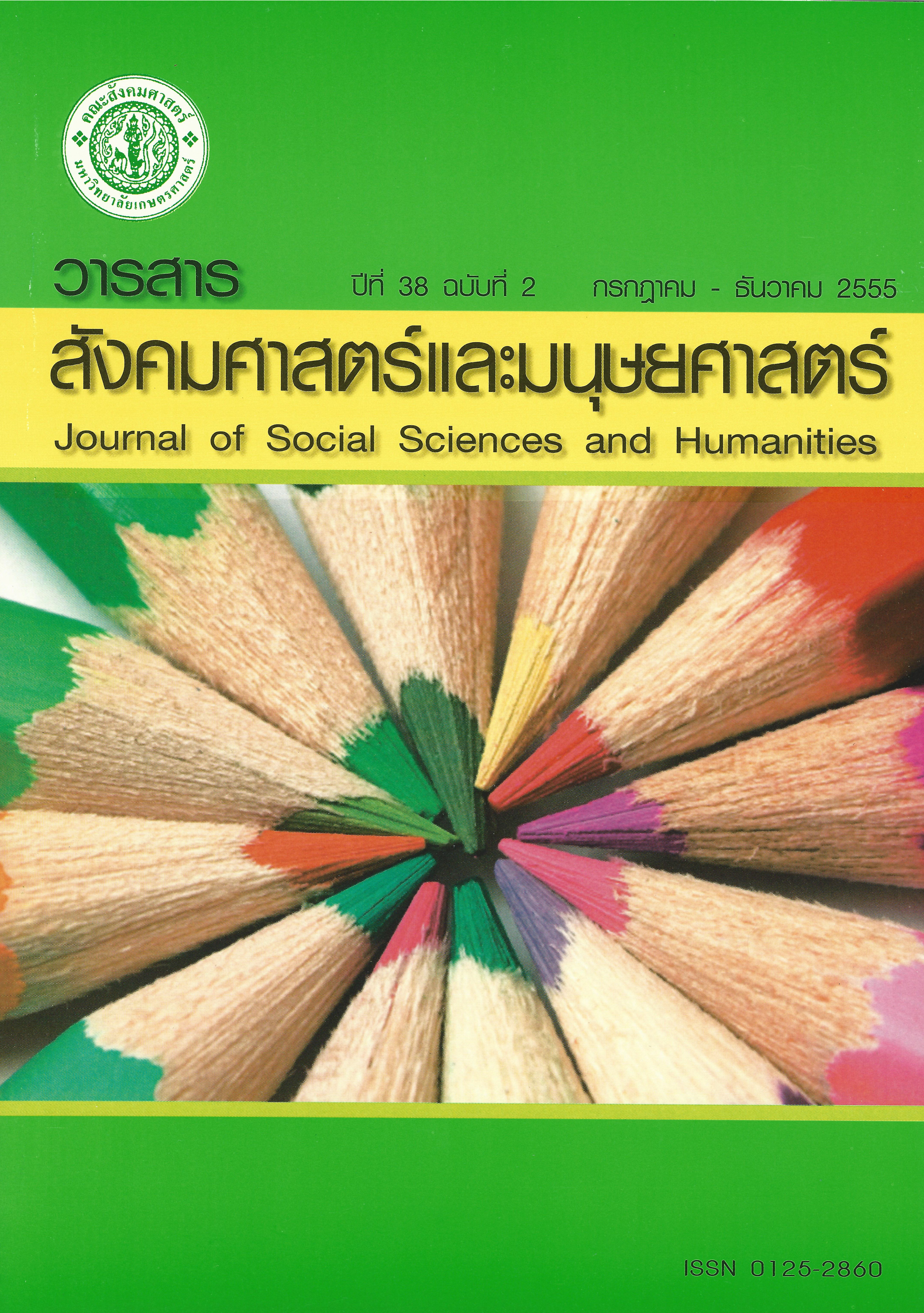การมองโลกในแง่ดี การปฏิบัติพัฒนกิจและความผาสุกทางใจ ของผู้สูงอายุอำเภอวังน้ำเขียว จังหวัดนครราชสีมา
Main Article Content
บทคัดย่อ
การวิจัยครั้งนี้มีวัตถุประสงค์เพื่อ 1) ศึกษาระดับการมองโลกในแง่ดี การปฏิบัติพัฒนกิจ และระดับความผาสุกทางใจของผู้สูงอายุอำเภอวังน้ำเขียว จังหวัดนครราชสีมา 2) ศึกษาเปรียบเทียบความผาสุกทางใจของผู้สูงอายุตามปัจจัยส่วนบุคคลของผู้สูงอายุ 3) ศึกษาความสัมพันธ์ระหว่าง การมองโลกในแง่ดี กับความผาสุกทางใจของผู้สูงอายุ และ 4) ศึกษาความสัมพันธ์ระหว่างการปฏิบัติพัฒนกิจกับความผาสุกทางใจของผู้สูงอายุ กลุ่มตัวอย่างเป็นผู้สูงอายุที่มีอายุ 60-79 ปี ในอำเภอวังน้ำเขียว จังหวัดนครราชสีมา จำนวน 370 คน เครื่องมือที่ใช้ในการวิจัยคือ แบบสัมภาษณ์ และวิเคราะห์ข้อมูลโดยใช้โปรแกรมสำเร็จรูปทางสถิติ สถิติที่ใช้ในการวิเคราะห์ข้อมูล ได้แก่ ค่าร้อยละ ค่าเฉลี่ย ส่วนเบี่ยงเบนมาตรฐาน การทดสอบแบบที การวิเคราะห์ความแปรปรวน วิธีความแตต่านัยสำคัญน้อยสุด และสัมประสิทธิ์สหสัมพันธ์แบบเพียร์สัน โดยกำหนดระดับนัยสำคัญทางสถิติที่ 0.05 และ 0.01
OPTIMISM, DEVELOPMENTAL TASK PERFORMANCE AND PSYCHOLOGICAL WELL-BEING OF THE ELDERLY IN WANG NAM KHIAO DISTRICT, NAKHON RATCHASIMA PROVINCE
The objectives of this study were as follows. First, it aimed to study the level of optimism, development task performance and psychological well-being of the elderly in Wang Nam Khiao District, Nakhon Ratchasima Province. Secondly, it compared the psychological well-being of the elderly according to their personal factors. Thirdly, it studied the relationship between optimism and psychological well-being of the elderly. And finally, it examined the relationship between developmental task performance and the psychological well-being of the elderly. The sample of this study was a group of 370 elderly people who were 60-79 years old living in Wang Nam Khiao District, Nakhon Ratchasima Province. The data were collected by using questionnaires and analyzed by using packaged statistic program. The statistical methods employed were the frequency, the percentages, the standard deviation, the t-test, the one way analysis of variance, the least significant difference method, and the Pearson’s product moment correlation coefficient. The level of significance was set at 0.05 and 0.01.
The results could be summarized as follows. First, optimism of the elderly was at the moderate level whereas the development task performance and the psychological well-being were high. Second, the difference in health status, level of education, participation in the elderly club’s activities, and monthly \ incomes of the elderly contributed to the differences in psychological well-being. Third, optimism was also positively correlated with psychological well-being at the 0.01 level of significance. And fourth, development task performance was also positively correlated with psychological well-being at the 0.01 level of statistical significance.


